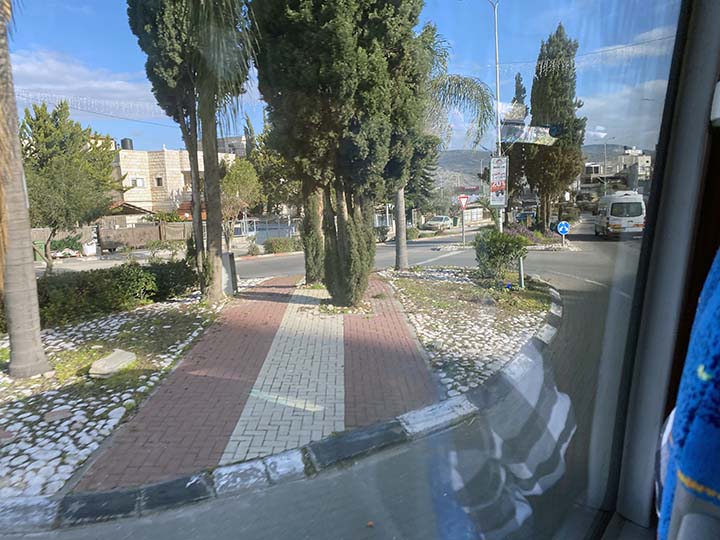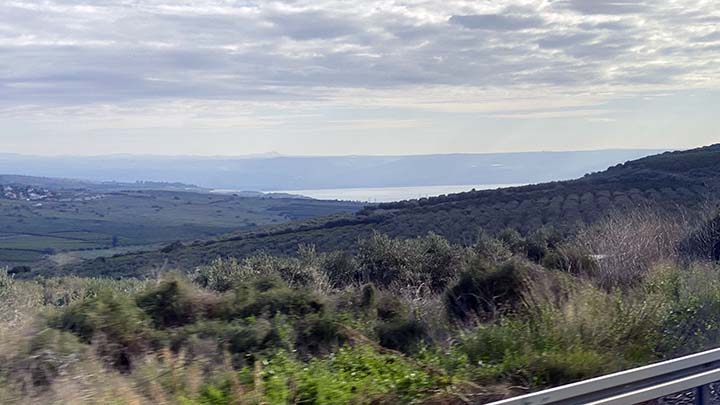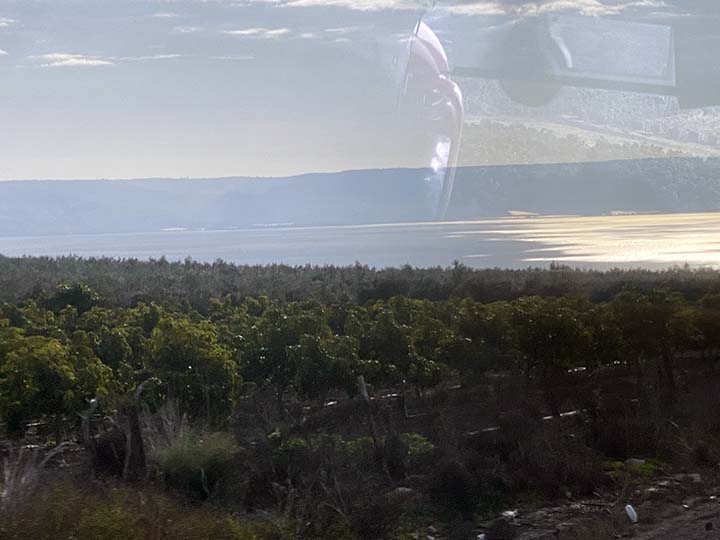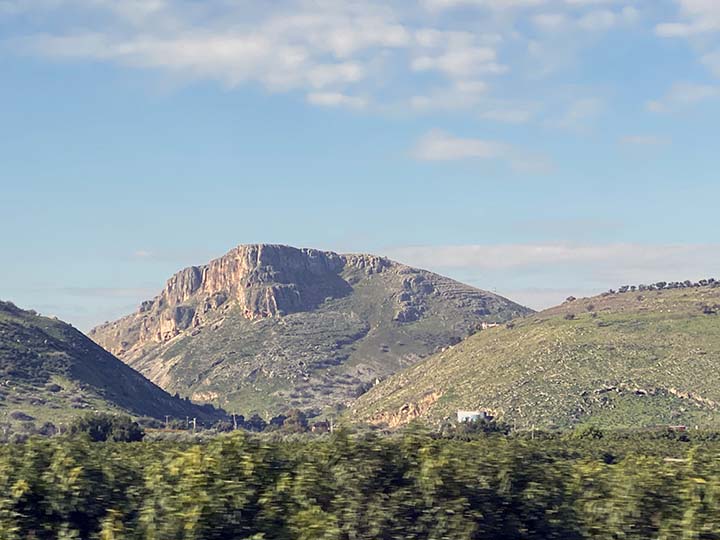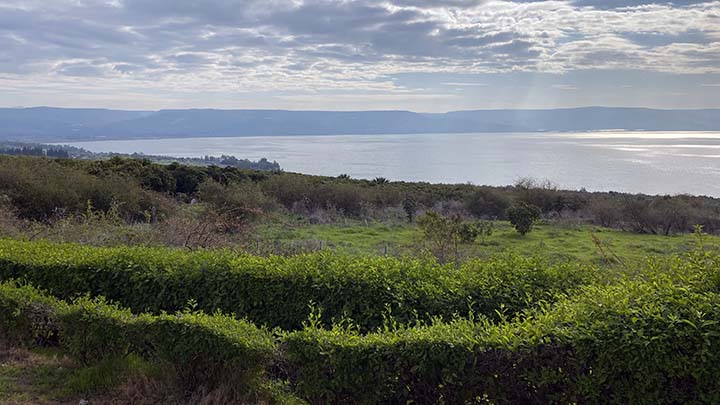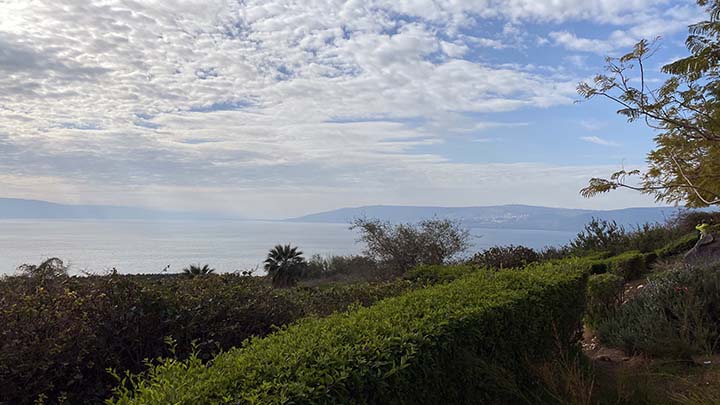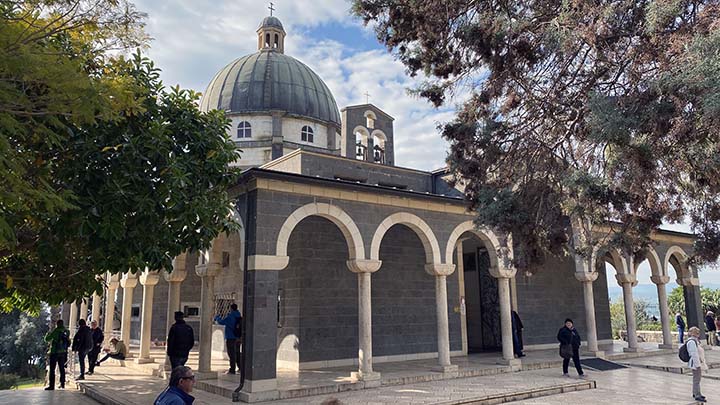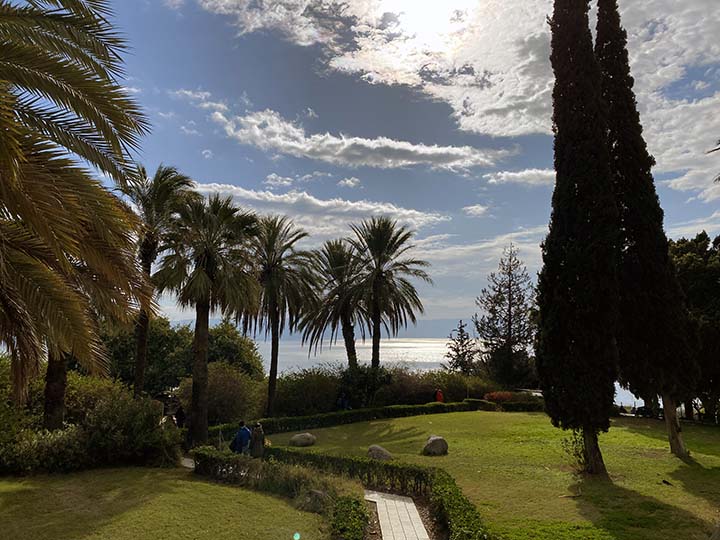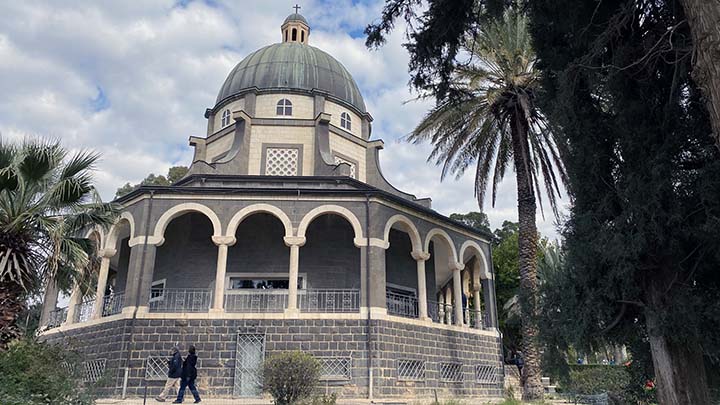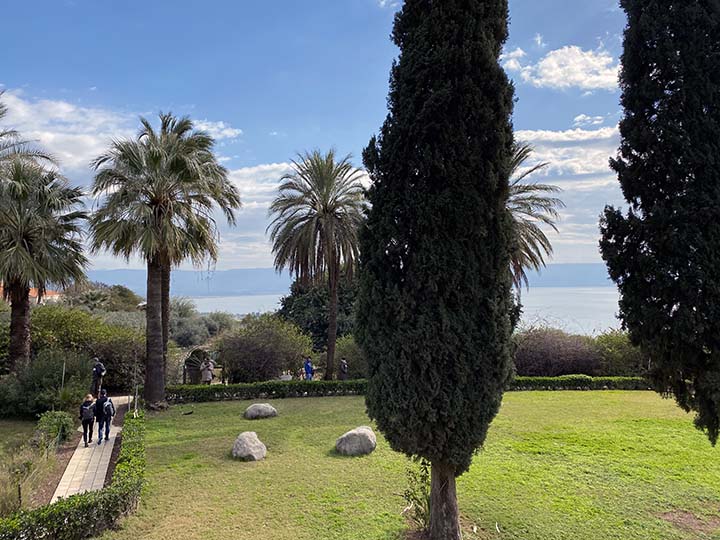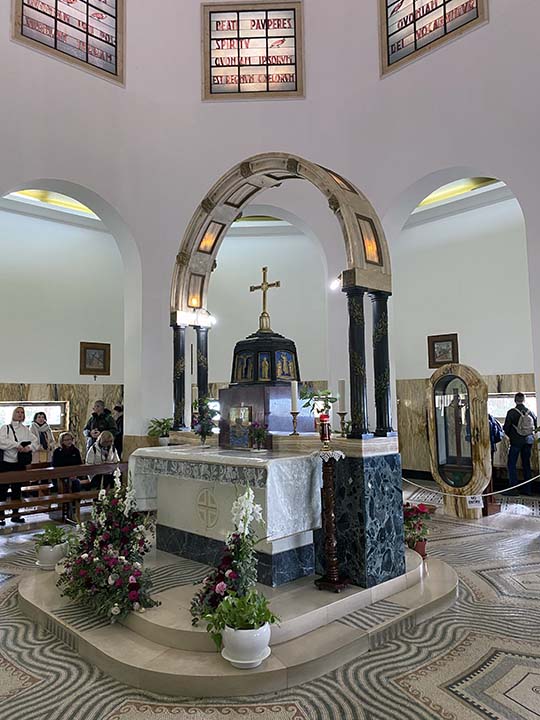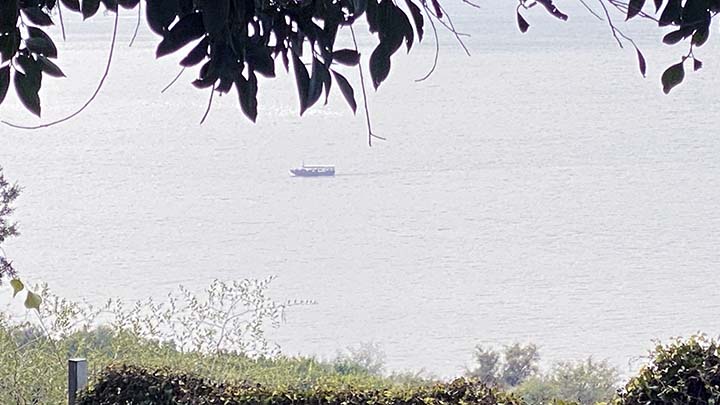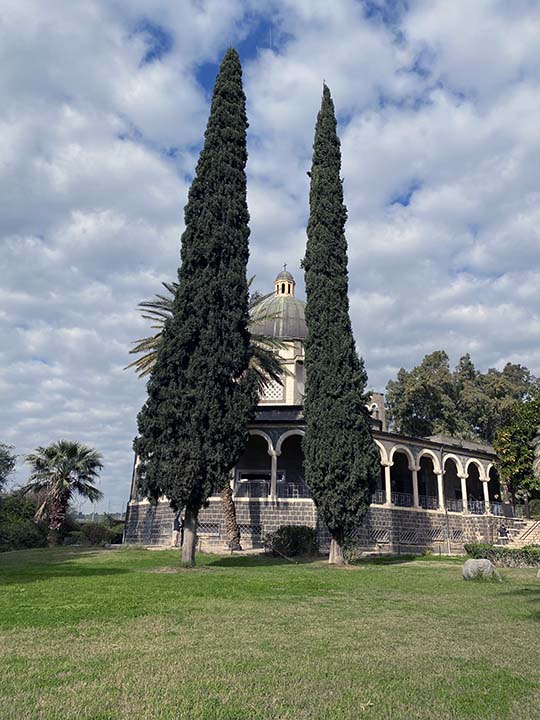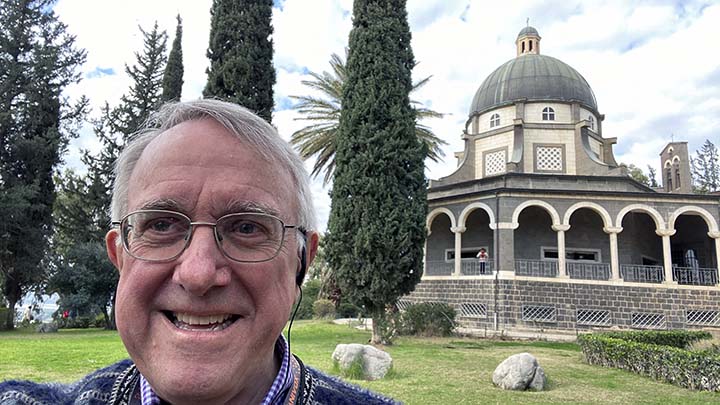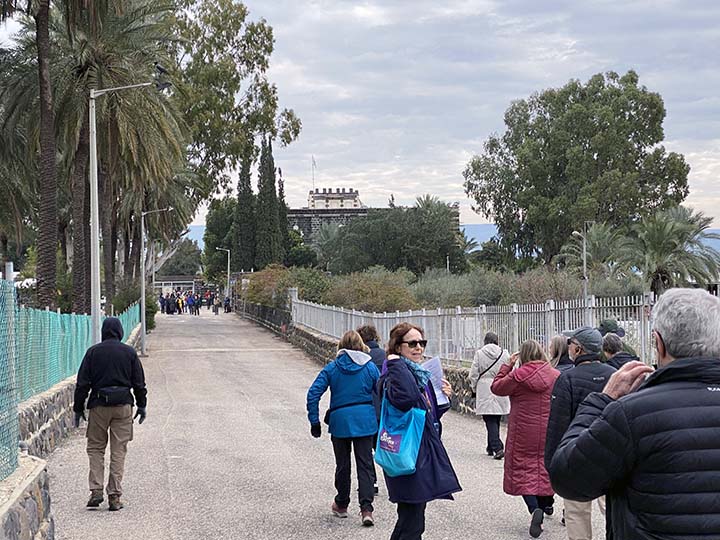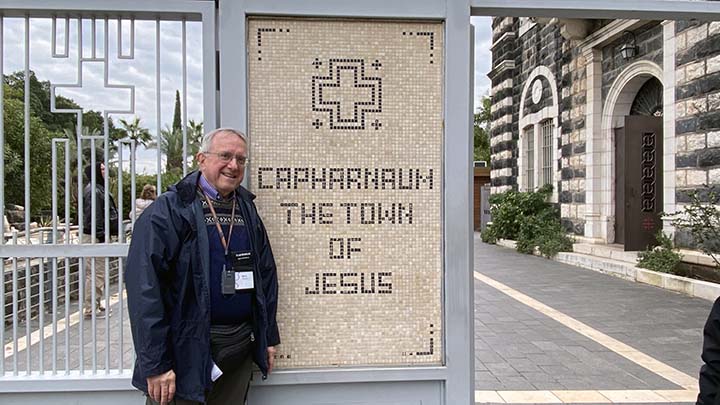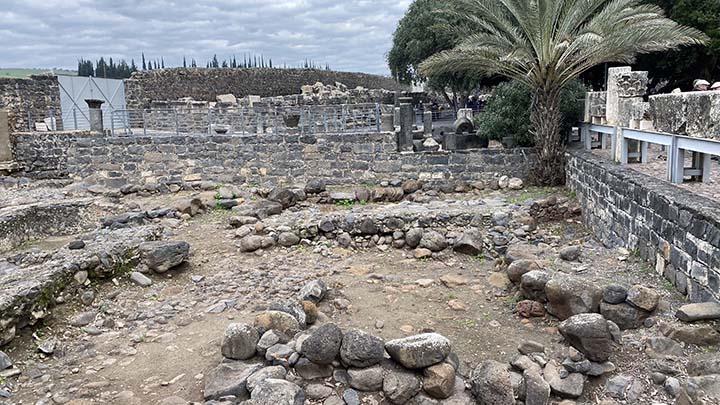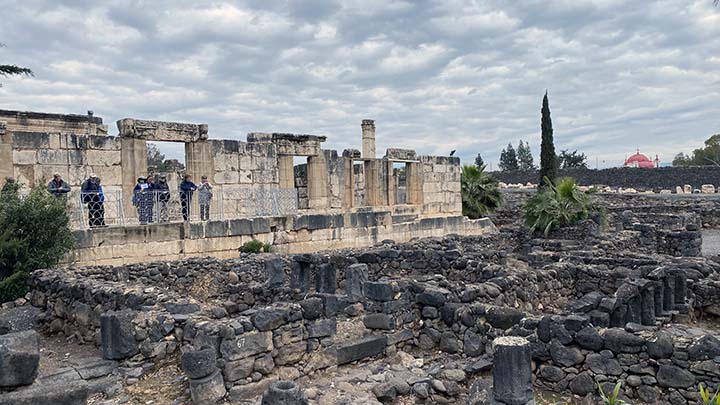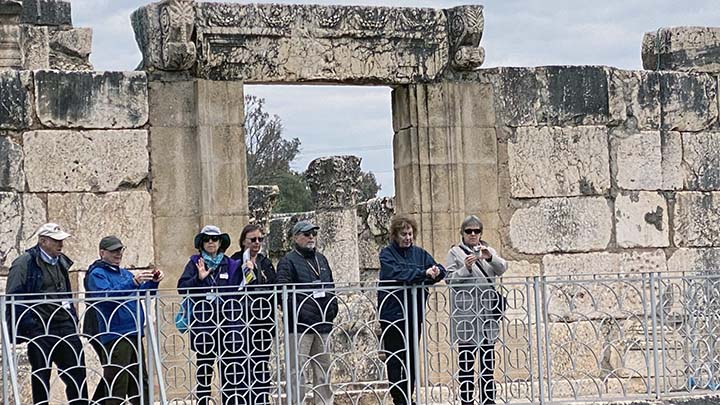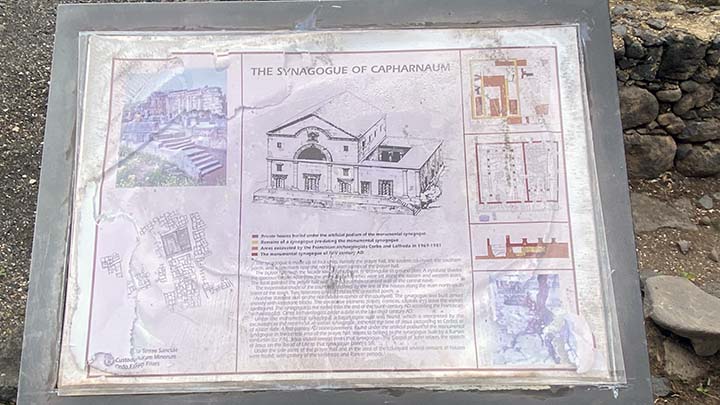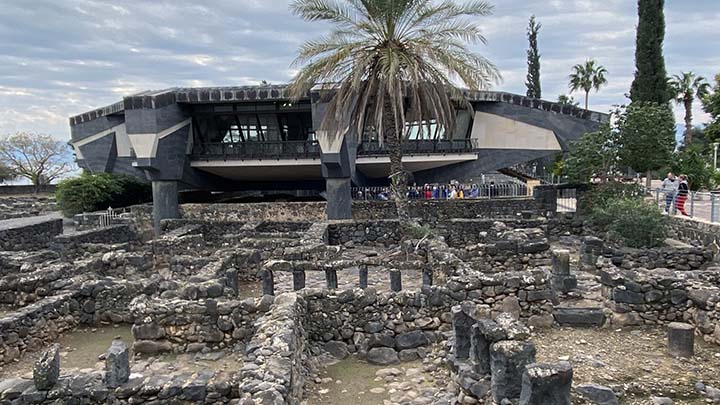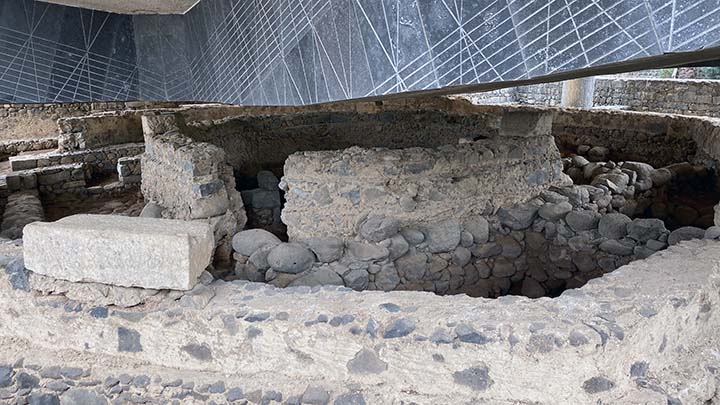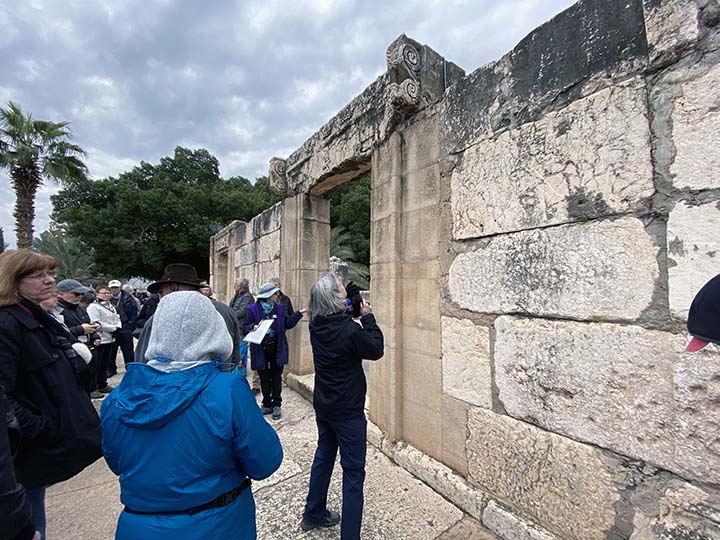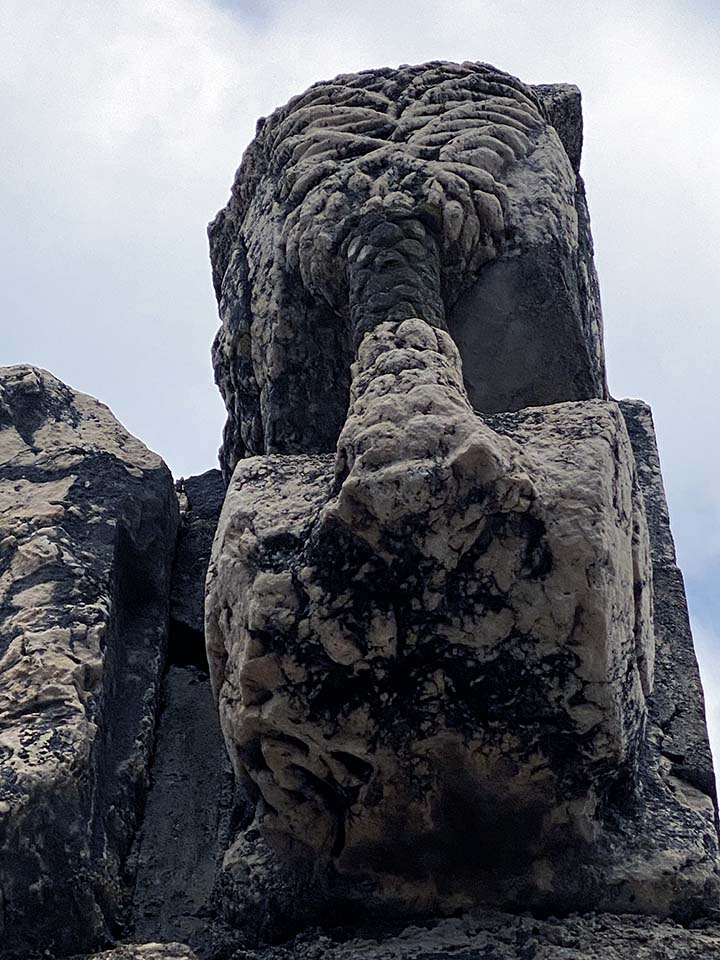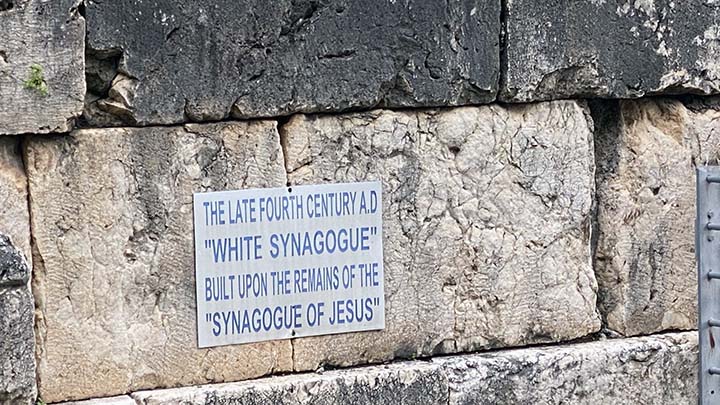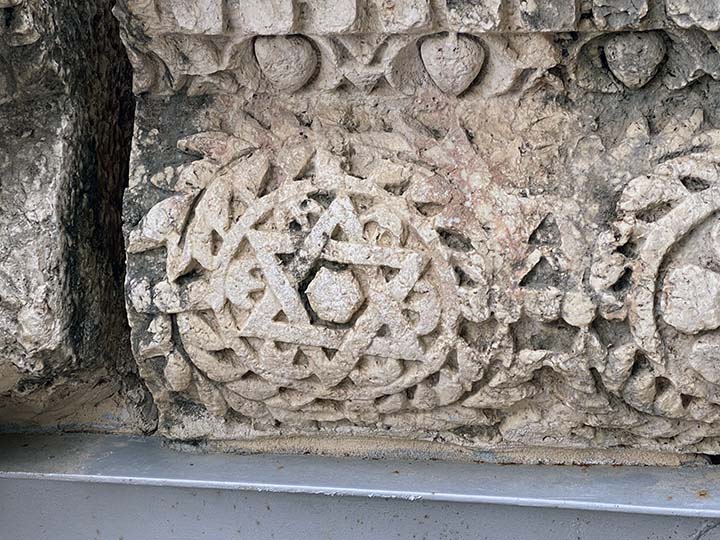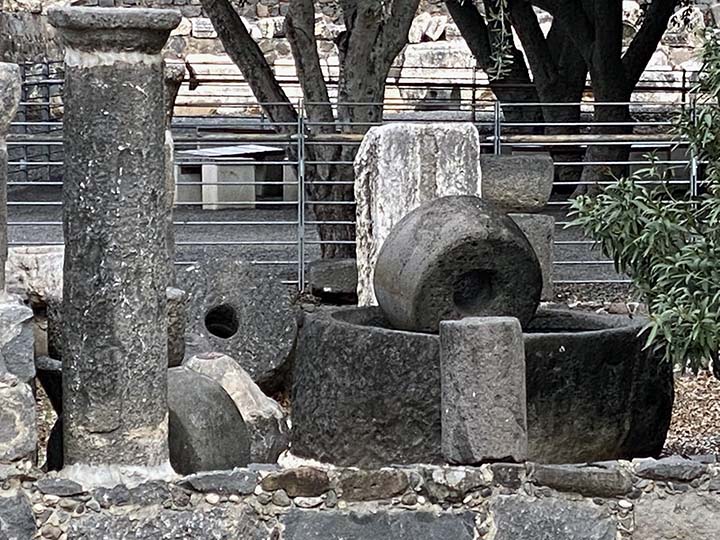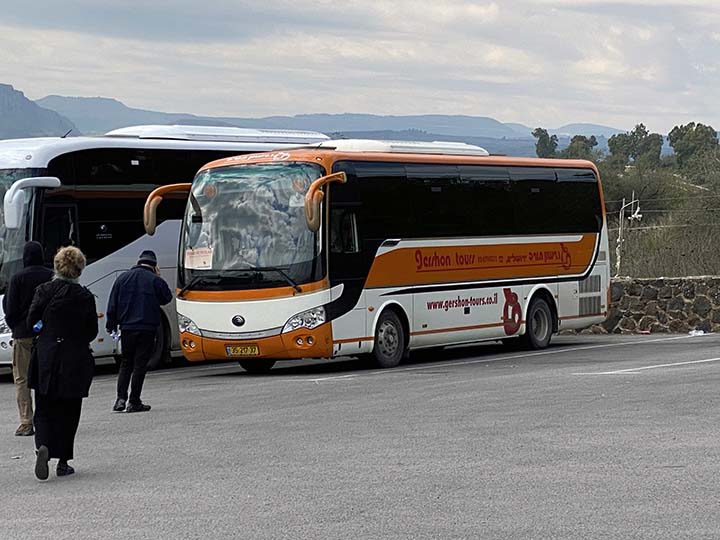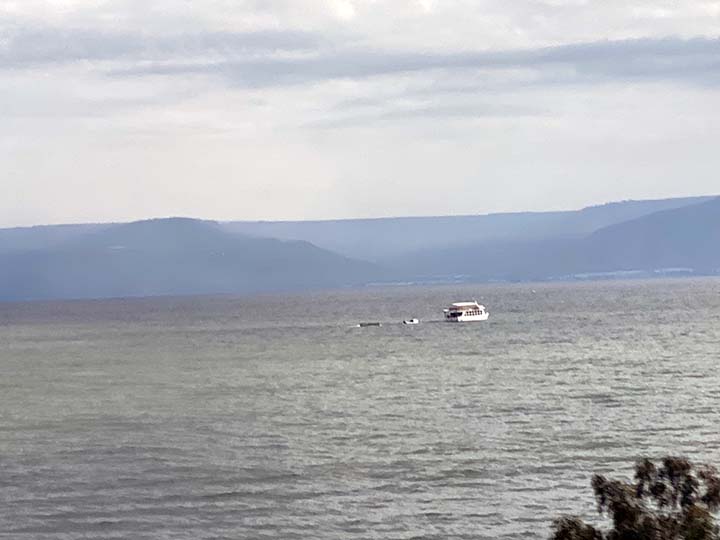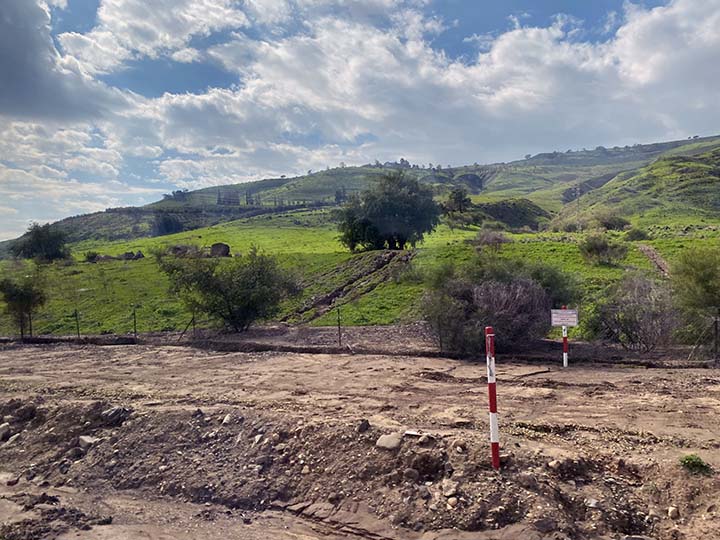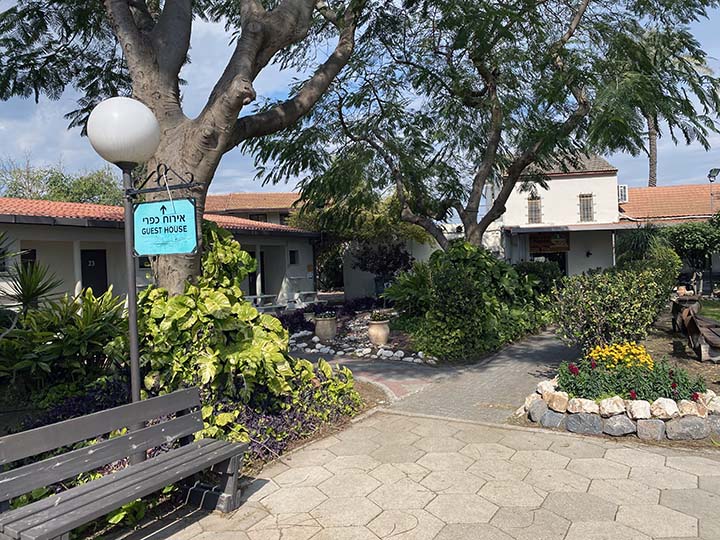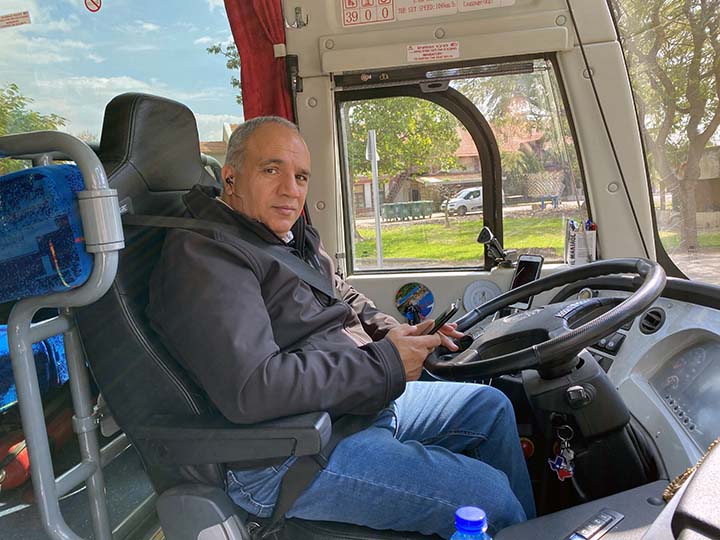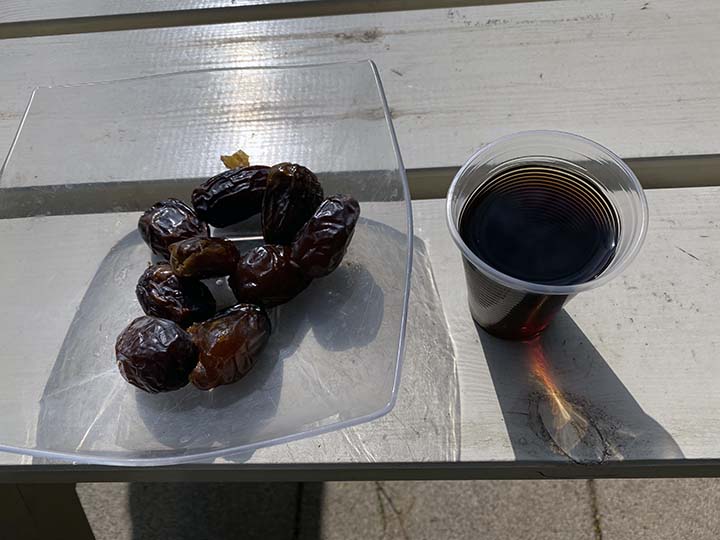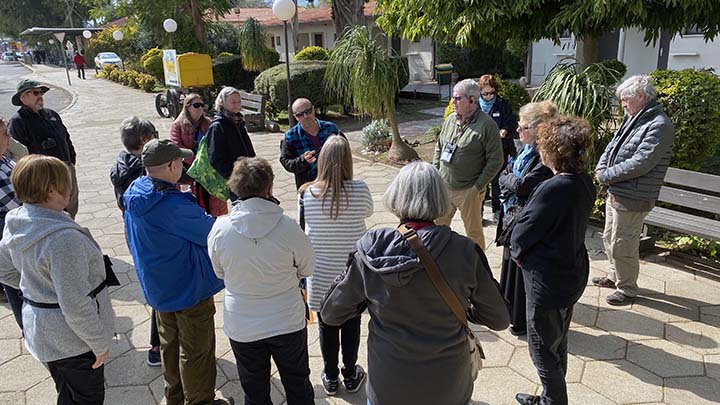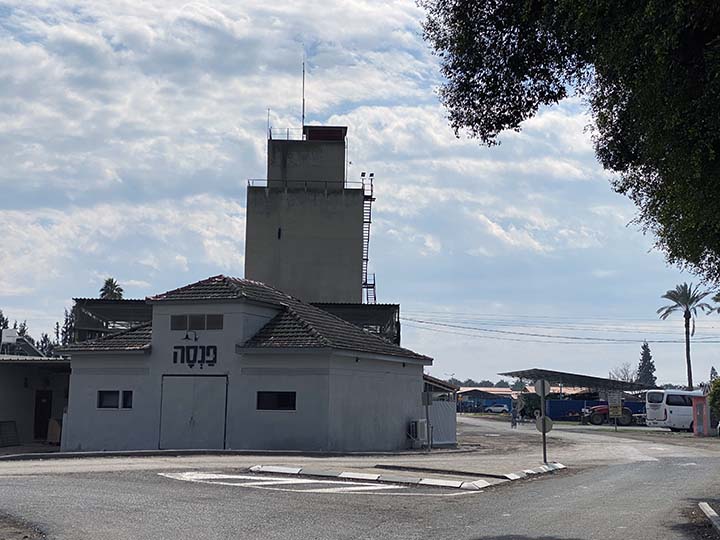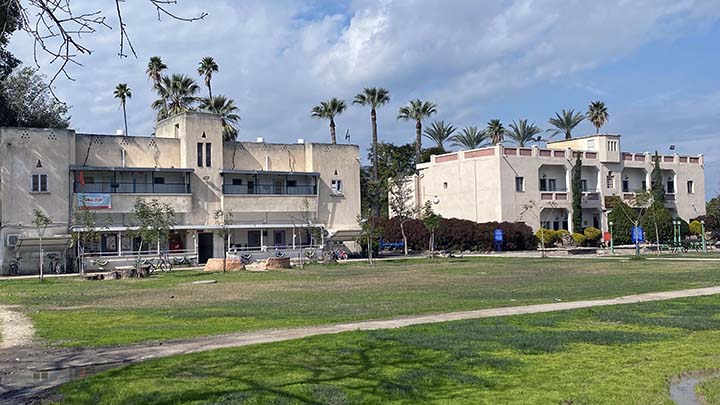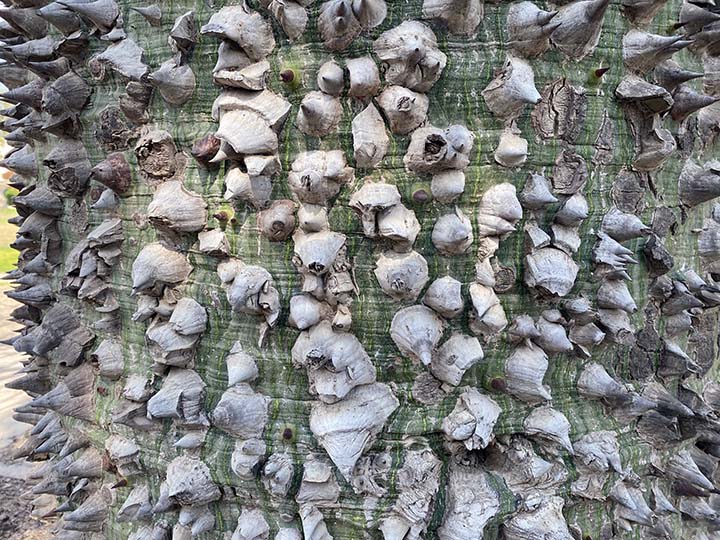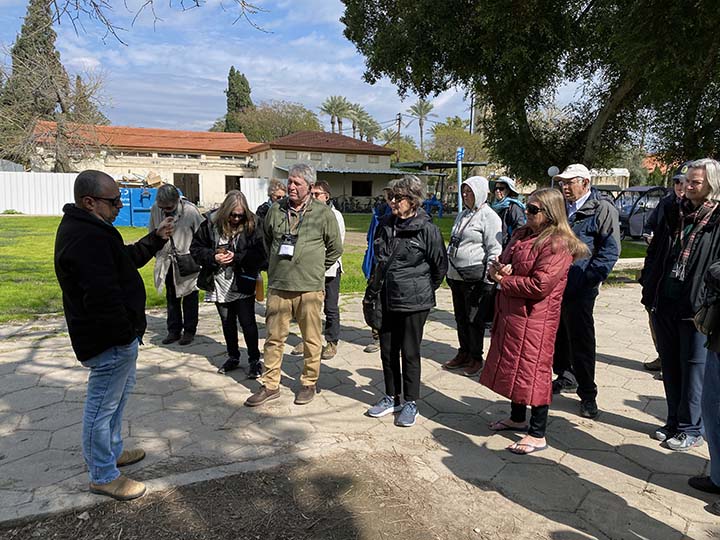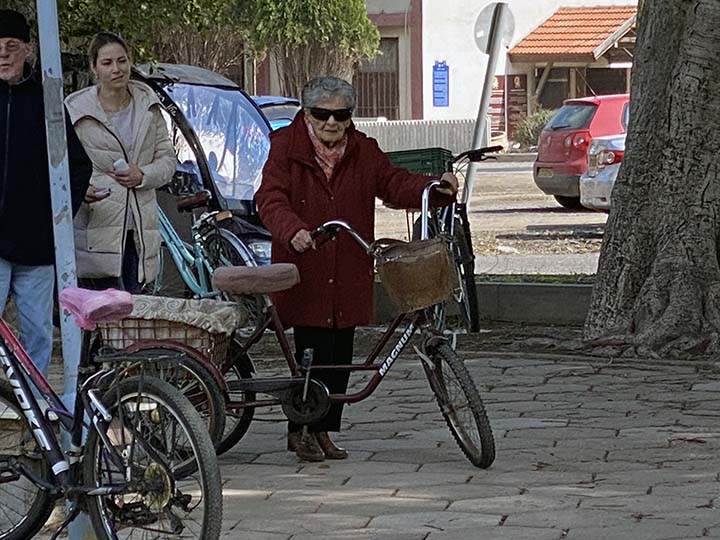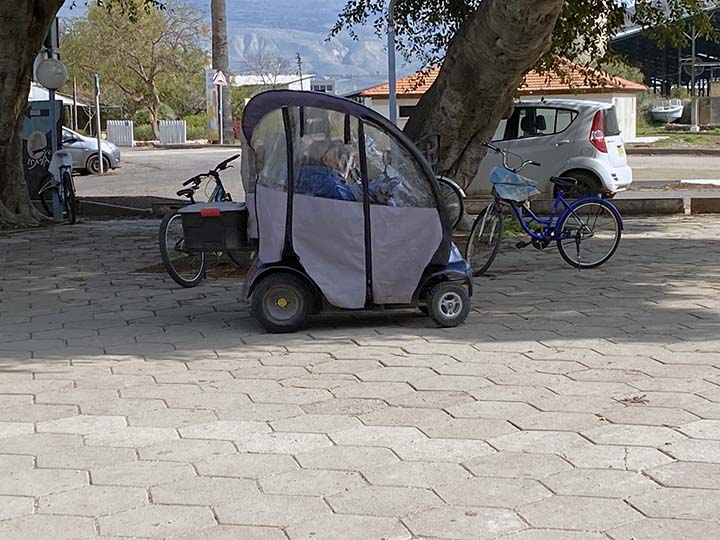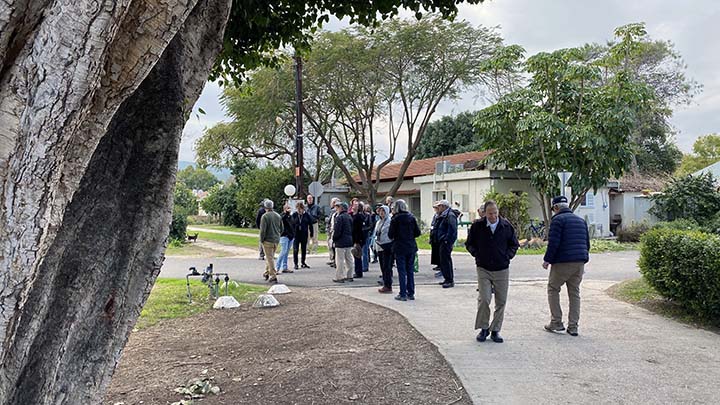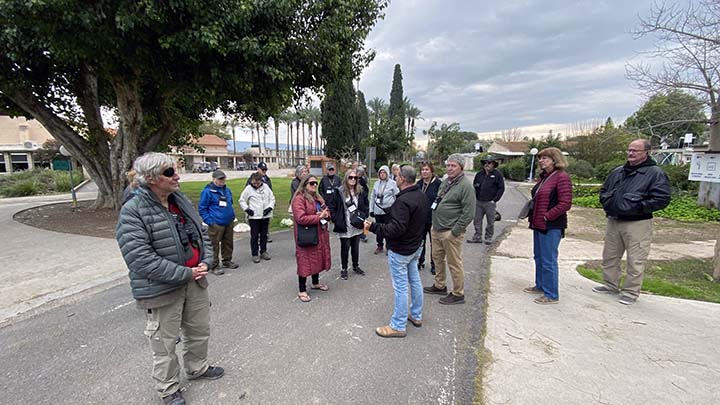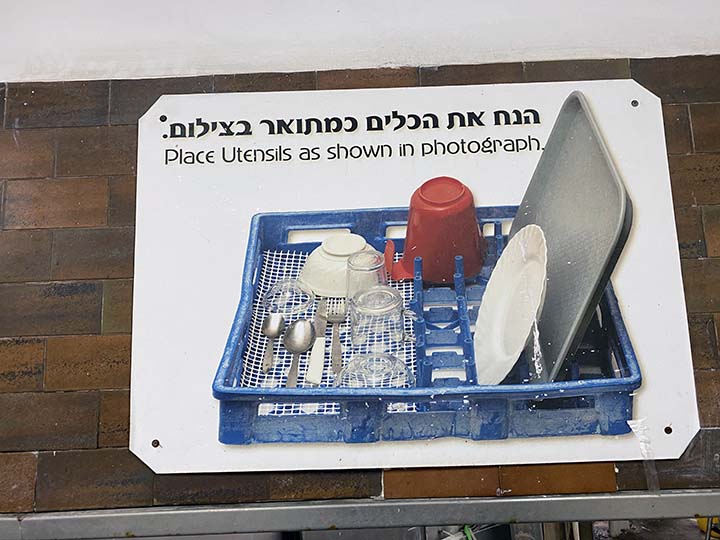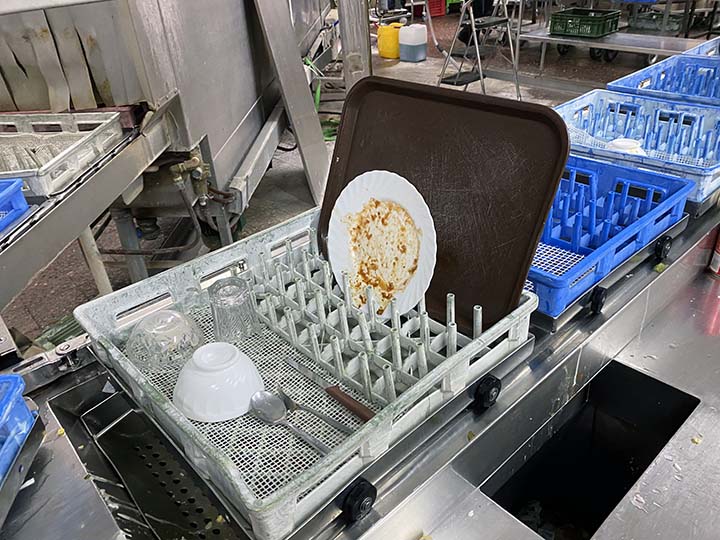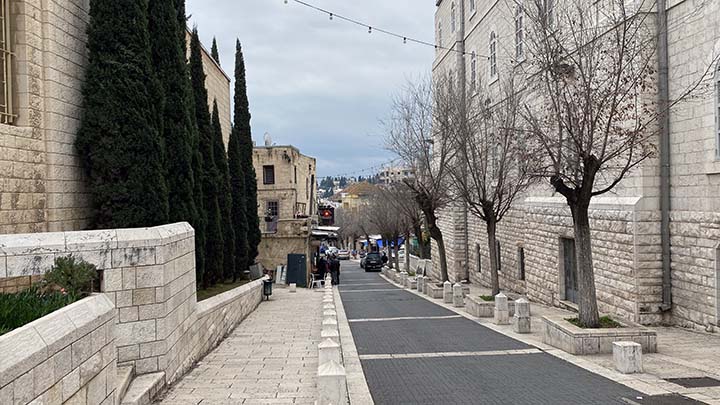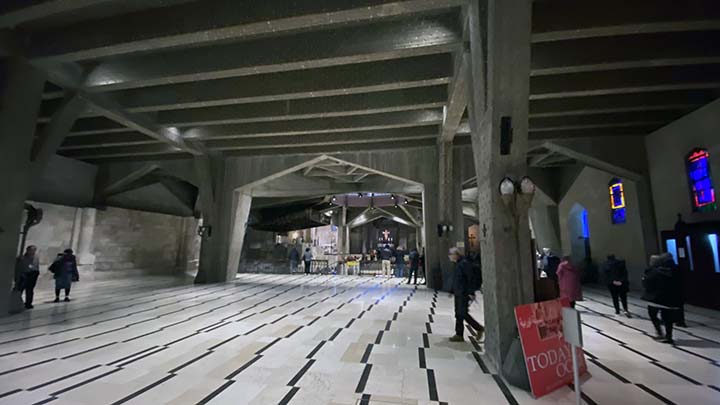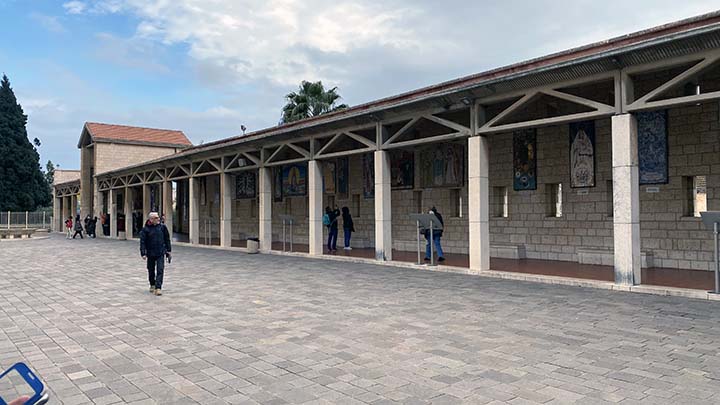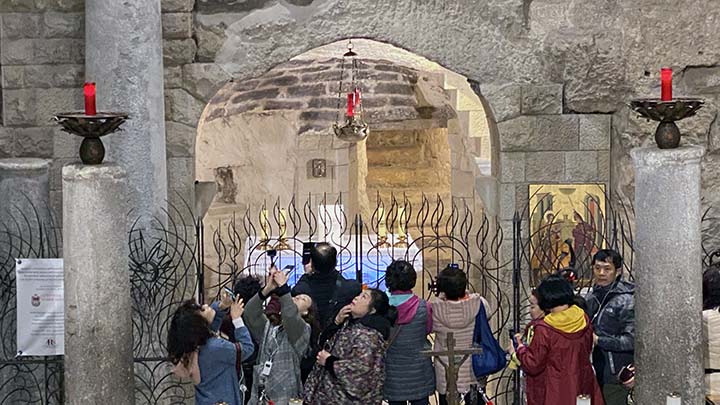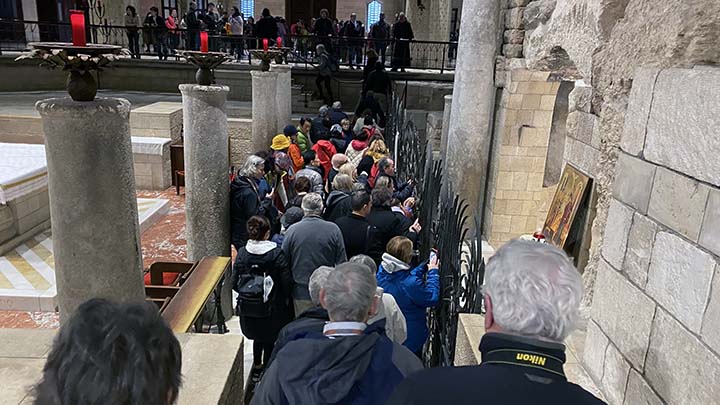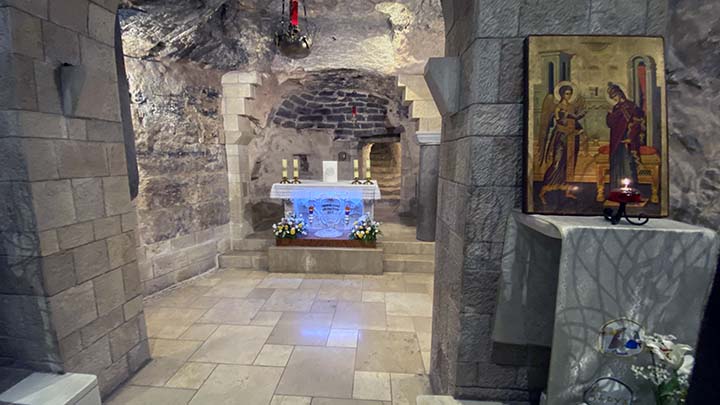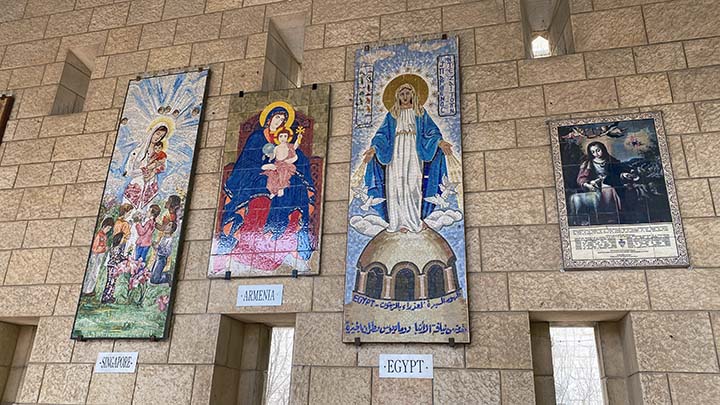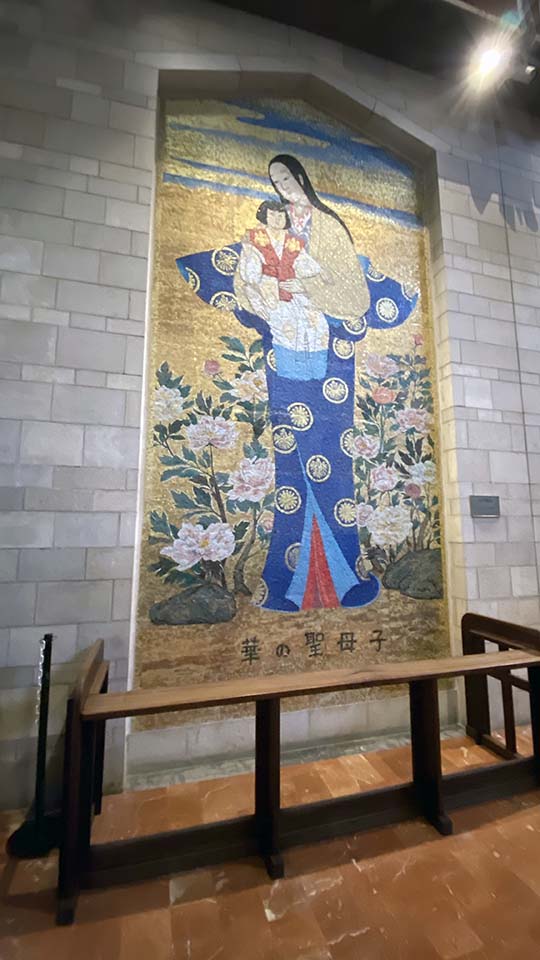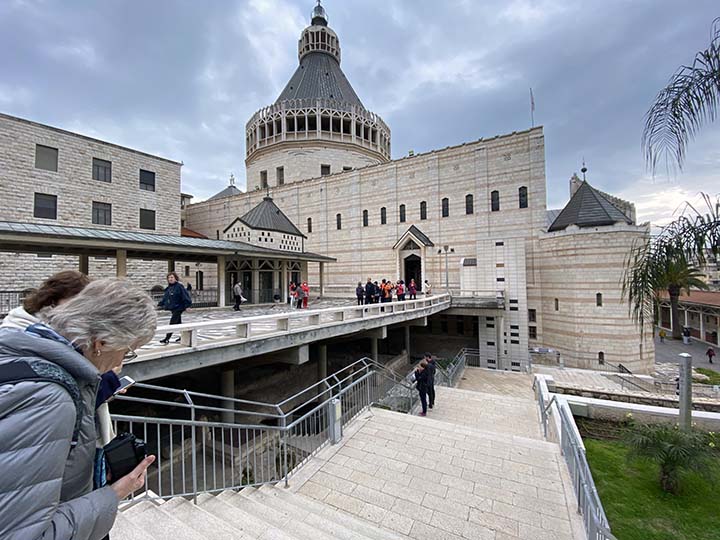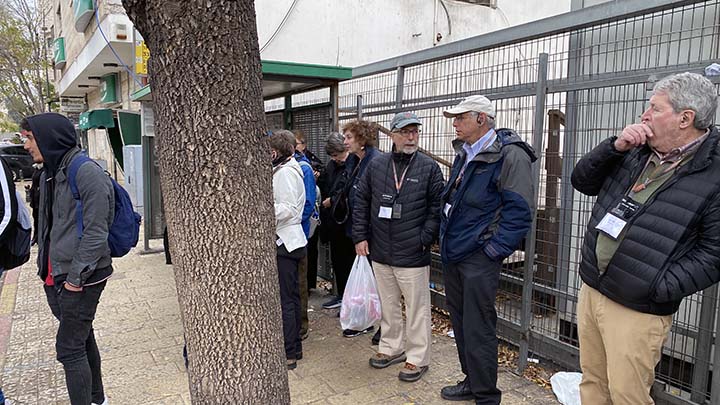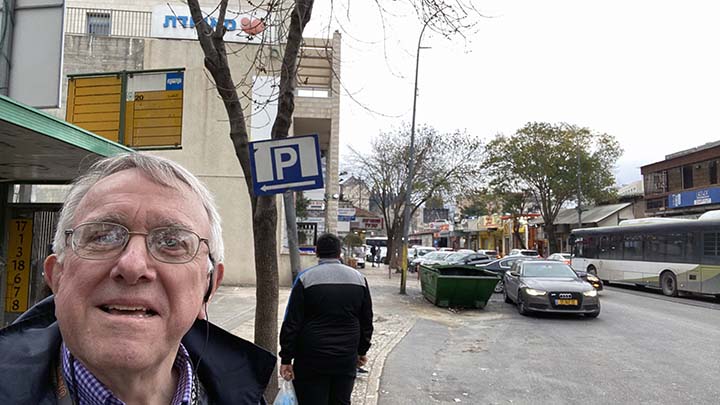|
Today we stood on the mount where Jesus gave a famous sermon, visited Peter’s old house, had lunch at a kibbutz, and saw the spot where an angel told Mary she was going to have a baby. That’s a lot for one day.
It’s still cold, but at least the sun is shining this morning.
I think it's going to be a beautiful day for a change.
If you think seeing the Dead Sea was a treat, how about the Sea of Galilee?
That's it! That's where He walked on the water! This isn't some hokey made-up special spot, this is the real deal! The Sea of Galilee!
Mount Arbel is a mountain in The Lower Galilee near Tiberias in Israel, with high cliffs, views of Mount Hermon in the Golan Heights, trails to a cave-fortress, and ruins of an ancient synagogue. Mt. Arbel sits across from Mount Nitai; their cliffs were created as a result of the Jordan Rift Valley and the geological faults that produced the valleys.
The Sea of Galilee, Lake Tiberias, Kinneret or Kinnereth, is a freshwater lake in Israel. It is the lowest freshwater lake on Earth and the second-lowest lake in the world (after the Dead Sea, a saltwater lake), at levels between 705 ft and 686 ft below sea level. The lake is fed partly by underground springs but its main source is the Jordan River, which flows through it from north to south.
In the New Testament, much of the ministry of Jesus occurs on the shores of the Sea of Galilee. In those days, there was a continuous ribbon development of settlements and villages around the lake and plenty of trade and ferrying by boat. The Synoptic Gospels of Mark (1:14–20), Matthew (4:18–22), and Luke (5:1–11) describe how Jesus recruited four of his apostles from the shores of the Kinneret: the fishermen Simon and his brother Andrew and the brothers John and James. One of Jesus' famous teaching episodes, the Sermon on the Mount, is supposed to have been given on a hill overlooking the Kinneret. Many of his miracles are also said to have occurred here including his walking on water, calming the storm, the disciples and the miraculous catch of fish, and his feeding five thousand people (in Tabgha). In John's Gospel the sea provides the setting for Jesus' third post-resurrection appearance to his disciples (John 21).
The Church of the Beatitudes is a Roman Catholic church located on the Mount of Beatitudes by the Sea of Galilee near Tabgha and Capernaum in Israel.
The church is located on a small hill overlooking the Sea of Galilee, the traditional "mount" on which Jesus delivered the Sermon on the Mount.[1] The current church sits uphill from the ruins of a small Byzantine-era church dating to the late 4th century,[2] which contains a rock-cut cistern beneath it and the remains of a small monastery to its southeast. Part of the original mosaic floor has also been recovered and is now on display in Capernaum.[2] Christian pilgrims are known to have commemorated this approximate site since at least the 4th century. In her itinerary of the Holy Land, after describing the Church of the Loaves and Fishes, the pilgrim Egeria (ca. 381 CE) writes, "Near there on a mountain is the cave to which the Savior climbed and spoke the Beatitudes." Both Popes Paul VI and John Paul II celebrated Mass at the church during their pastoral visits to the Holy Land.
The modern church was built between 1936 and 1938 near the site of the fourth-century Byzantine ruins. The floor plan is octagonal, the eight sides representing the eight Beatitudes. The church is Neo-Byzantine in style with a marble veneer casing the lower interior walls and gold mosaic in the dome. Around the altar are mosaic symbols on the pavement representing Justice, Prudence, Fortitude, Temperance, Faith, Hope, and Charity.
All along the walkways there are reminders of the Beatitudes.
But is this really and truly the spot where the Sermon on the Mount was delivered? And if we don't know for sure, why was this location chosen as the most likely spot? Jerome Murphy-O'Connor describes the selection of the site thus: "It was perhaps inevitable that this well-watered area with its shade trees on the shore of the Sea of Galilee, where Byzantine pilgrims ate their picnics, should have been identified as the location of two episodes involving the consumption of food, the multiplication of the loaves and fishes and the conferral on Peter of the responsibility of leadership after a fish breakfast. Then it became convenient to localize the Sermon of the Mount on the small hill nearby." (The Holy Land: An Oxford Archaeological Guide from Earliest Times to 1700, p. 277) Regardless of whether this is the very spot, the Church of the Beatitudes stands in the general area and in a very similar setting to where Jesus would have stood as he delivered his famous sermon. As Murphy-O'Connor puts it, "from here one can see virtually all the places in which Jesus lived and worked"
The inside is octagonal too.
The locals call that a "Jesus boat." Tourists hire them to cruise out onto the lake where they pray and sing. It looks pretty today, but do not let yourself get caught out there in a storm.
I thought this sign was funny. Can't explain why, I just did.
The church was designed by the architect Antonio Barluzzi, under commission from the Italian Mission Society with funding from Benito Mussolini. How about that?
The tourist remains enthralled by this whole experience.
I had my eye out for signs of a wedding when we passed through Cana a little while ago, but no luck. I did spot this wine in a gift shop though. I’m guessing this is the best wine they have.
Now let's go to Capernaum.
The tourist wants you to remember it's the town of Jesus.
Capernaum, lit. “Nahum's village,” was a fishing village established during the time of the Hasmoneans, located on the northern shore of the Sea of Galilee. It had a population of about 1,500. Archaeological excavations have revealed two ancient synagogues built one over the other. A house turned into a church by the Byzantines is believed to have been the home of Saint Peter. The town is cited in all four gospels where it was reported to have been the hometown of the tax collector Matthew, and located not far from Bethsaida, the hometown of the apostles Simon Peter, Andrew, James and John. Some readers take Mark 2:1 as evidence that Jesus may have owned a home in the town, but it is more likely that he stayed in the house of one of his followers here. He certainly spent time teaching and healing there. One Sabbath, Jesus taught in the synagogue in Capernaum and healed a man who was possessed by an unclean spirit (Luke 4:31–36 and Mark 1:21–28). This story is notable as the only one that is common between the gospels of Mark and Luke, but not contained in the Gospel of Matthew. Afterward, Jesus healed Simon Peter's mother-in-law of a fever (Luke 4:38–39). According to Luke 7:1–10 and Matthew 8:5, this is also the place where Jesus healed the servant of a Roman centurion who had asked for his help. Capernaum is also the location of the healing of the paralytic lowered by friends through the roof to reach Jesus, as reported in Mark 2:1–12 and Luke 5:17–26. According to the Synoptic Gospels, Jesus selected this town as the center of his public ministry in Galilee after he left the small mountainous hamlet of Nazareth (Matthew 4:12–17). He also formally cursed Capernaum, along with Bethsaida and Chorazin, saying "you will be thrown down to Hades!" (Matthew 11:23) because of their lack of faith in him as the Messiah.
Those lighter stones are the remains of the synagogue.
Shari is explaining it all.
This is what it used to look like.
In 1968, excavation of the western portion of the site—the portion owned by the Franciscans—was resumed , and during this phase, the major discovery was of a 1st-century house which is believed by Christians to be the home of St. Peter. These excavations have been ongoing, with some publication on the Internet as recently as 2003. Peter's house is supposedly under that modern structure. The structure itself is a modern church built above the excavated remains of the ancient house and a Byzantine octagonal church, and dedicated in 1990. The disk-shaped structure stands on concrete stilts, ensuring visibility to the venerated ancient building. Additionally, a glass floor located at the center of the church allows direct view of the excavated remains below.
So what is actually down there? One block of homes, called by the Franciscan excavators the sacra insula or "holy insula" ("insula" refers to a block of homes around a courtyard) was found to have a complex history. Located between the synagogue and the lake shore, it was found near the front of a labyrinth of houses from many different periods. Three principal layers have been identified:
The excavators concluded that one house in the village was venerated as the house of Peter the fisherman as early as the mid-1st century, with two churches having been constructed over it
Let's go inside the synagogue.
According to Luke's Gospel, the Capernaum synagogue at the time of Jesus' ministry had been built or funded by a Roman centurion based there. The ruins of a later building, among the oldest synagogues in the world, were identified by Charles William Wilson. The large, ornately carved, white building stones of the synagogue stood out prominently among the smaller, plain blocks of local black basalt used for the town's other buildings, almost all residential. The synagogue was built almost entirely of white blocks of calcareous stone brought from distant quarries. The synagogue appears to have been built around the 4th or 5th century. Beneath the foundation of this synagogue lies another foundation made of basalt, and Loffreda suggests that this is the foundation of a synagogue from the 1st century, perhaps the one mentioned in the Gospels. Later excavation work was attempted underneath the synagogue floor, but while Loffreda claimed to have found a paved surface, others are of the opinion that this was an open, paved market area. The building consists of four parts: the praying hall, the western patio, a southern balustrade and a small room at the northwest of the building. The internal walls were covered with painted plaster and fine stucco work found during the excavations. The ancient synagogue has two inscriptions, one in Greek and the other in Aramaic, that commemorate the benefactors that helped in the construction of the building. There are also carvings of five- and six-pointed stars and of palm trees.
Palm tree.
Proof.
The tourist asked Shari why everybody is so sure this is a synagogue? It looks very much like it could be a pagan temple. Then she pointed to this. Oh.
See the Star of David?
See the menorah? The tourist does ask stupid questions sometimes.
With one of these you can grind your own grain.
Time to go.
Seriously, keep an eye out for storm clouds because nobody's going to walk out there to help you.
Road construction.
Right back there is where the river Jordan comes out of the Sea of Galilee. I blinked and nearly missed it when we drove across it. I certainly didn’t have time to grab my camera. It was, maybe, 10 yards across.
Now we have arrived at Kibbutz Degania B. (There is also an A.) It was founded in 1920 by Jewish settlers determined to employ Marxist ideals in an agricultural community. https://en.m.wikipedia.org/wiki/Degania_Bet A kibbutz, lit. "gathering, clustering"; plural: kibbutzim is a collective community in Israel that was traditionally based on agriculture. The first kibbutz, established in 1909, was Degania. (Which is where we are!) Today, farming has been partly supplanted by other economic branches, including industrial plants and high-tech enterprises. Kibbutzim began as utopian communities, a combination of socialism and Zionism. In recent decades, some kibbutzim have been privatized and changes have been made in the communal lifestyle. A member of a kibbutz is called a kibbutznik.
Our driver was bemused by my taking his picture.
We were welcomed with dates and tamarind juice. Delicious!
Our guide was a member of the kibbutz and he told us all about what it’s like to live there. While the rules have been relaxed somewhat since the place was founded, basically everybody owns all property together and all salaries are pooled and all decisions are made democratically and there is no hierarchy of management. In other words, as our guide said, “nobody is the boss and everybody thinks they are the boss.”
That's a chocolate factory.
These are some of the original housing units.
When the settlers first came to this area the land was bare. All trees have been brought in from elsewhere. This tree came from South America.
And this tree would make a great backscratcher.
On a kibbutz you go to school when you are a child, then you work through your productive years, and when you become elderly you go back to school again.
No problems here.
All kinds of snazzy rides are available.
We had a lovely day to explore the kibbutz.
And our guide kept us educated and entertained.
Then he took us to the cafeteria for lunch.
After dining, like good kibbutzniks the Road Scholars bussed their own tables. This involved placing all dishes and utensils properly on the dishwashing machine conveyor belt. There was a large sign showing how it must be done.
What do you think? Did the tourist get it right?
I guess even a kibbutz needs police to sort things out occasionally.
Now back to Nazareth.
Right this way...
To the final sight of the day: the Church of the Annunciation. It was established over the site where the Catholic tradition holds to be the house of Virgin Mary, and where the angel Gabriel appeared to her and announced that she would conceive and bear the Son of God, Jesus – an event known as the Annunciation. Looks nice enough outside...
But inside it's clear it is built in a style sometimes characterized as Italian Brutalism, which is another way of saying it is ugly.
On the walls enclosing the courtyard of the basilica, there is a gallery of Madonnas with icons (mainly mosaics, but also some made of ceramic tiles) representing some of the most important Marian devotions in different countries. Some of the main Marian devotions from Spain are included: the Virgin of Candelaria, patron saint of the Canary Islands; the Virgin of Montserrat, patroness of Catalonia; the Virgin of the Forsaken, patroness of Valencia; and the Virgin of Guadalupe, patroness of Extremadura. How about that?
So down below to the left is where the angel told Mary the impossible was about to happen.
You can see the sacred spot easily from a distance.
But if you want to see it up close you have to get in line.
The tourist got in line.
A service is underway.
The dome is impressive.
The decorations are impressive.
They really do go all out for Madonnas here.
Did you know Mary wore a kimono? Me neither.
The lower level of the church contains the Grotto of the Annunciation, believed by many Christians to be the remains of the original childhood home of Mary.
Nice place, Mary.
The Road Scholars don't look a bit pooped.
Neither does the tourist.
|

